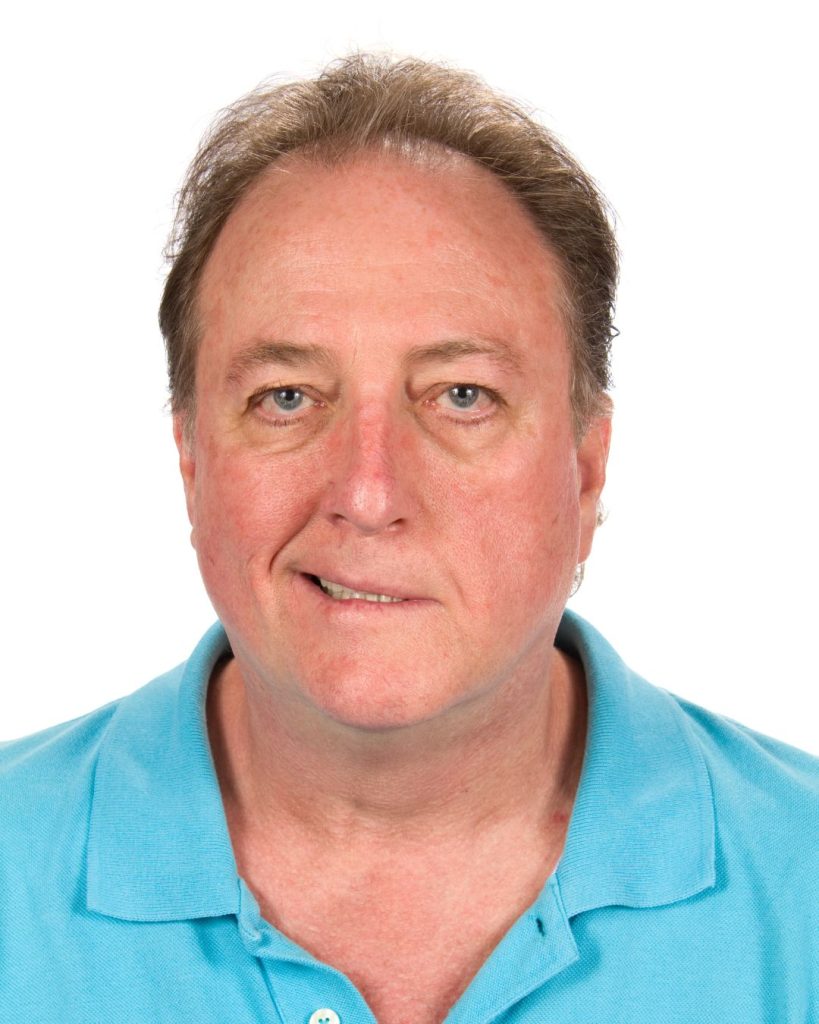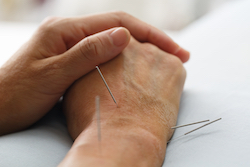
Bell’s palsy treatment options are actually pretty straight forward. It can be an alarming experience, with initial fears of stroke, tumour or permanent damage 1,2,7. It involves sudden paralysis of one side of the face due to lower motor neuron nerve paralysis that gets worse until it peaks within 48-72 hours 7.
With Bell’s palsy the psychological impact can be huge. Facial expression/appearance is how we are perceived (and often judged) socially and it is critical to our sense of social connection and well-being, creating a genuine risk of depression and distress that needs to be well managed 5,6.
In addition to sudden one-sided facial paralysis, the major symptoms can include loss of ability to close the eyelid, smile or show facial expressions on that side. Approximately half of all Bell’s palsy patients complain of pain behind the ear 2-3 days prior to onset of paralysis and some rare cases occur on both sides of the face 3,7.
Early symptoms can include 7:
Bell’s palsy is fairly uncommon (less than 0.01% of the population affected) and impacts all age ranges, most commonly between 15-45 years old; males and females are affected at about the same rate 2,4.
Despite the alarming sudden onset of stroke-like paralysis symptoms, luckily 80-90% of patients will begin to regain function within 3 weeks, though up to 30% will not make a complete recovery untreated. Let that sink in for a moment. If a patient only experiences partial paralysis, there is a 94% likelihood of complete recovery over 6 months without treatment 1,2.
The exact cause of Bell’s palsy is unknown, although a viral cause is suspected 7. What is known is that facial nerve oedema and inflammation creates pressure on the nerve in the small temporal bone canal that it passes through, damaging the nerve and/or impeding nerve signals. The facial nerve innervates facial muscles as well as taste fibers, part of the tongue, lacrimal and salivary glands, and sensory fibers. Hence the common experience of sagging at the corner of the mouth, inability to close the eyelid, dryness of the eye and/or mouth and changes in taste sensation 7,10.
Risk factors for Bell’s palsy include 5:
Diagnosing Bell’s palsy is a matter of carefully eliminating other causes of facial paralysis according to the clinical Guideline Development Group (GDG). Clinician’s will carry out a thorough physical examination and check the patient’s medical history to exclude the possible alternate causes of facial paralysis 2.
Routine laboratory testing and diagnostic imaging for new cases of Bell palsy is not recommended as part of assessment according to the American Academy of Otolaryngology-Head and Neck Surgery Foundation. Persistent and severe Bell’s palsy may be aided by the use of nerve conduction velocity and EMG testing, which is most effective when performed at least 3-10 days after the onset of paralysis 7.
In Chinese Medicine Bell’s palsy (Wind-Stroke) is divided into two external patterns of disharmony (Wind-Cold and Wind-Heat). External Wind is a pathogenic factor that invades the main channels and collateral channels. This obstructs the Tai Yang, Shao Yang and Yang Ming channels of the face causing facial paralysis: sudden facial numbness, deviation of the mouth and eyes. The treatment protocol is to extinguish wind and either expel cold or clear heat respectively 12,13.

In China there are entire hospital wards dedicated to treating stroke victims with Acupuncture and Chinese herbal medicine, improving paralysis and other symptoms with great success. Bell’s palsy treatment in China is also approached this way, yet in western countries the powers that be remain hesitant to recommend Acupuncture.
A systematic review and meta analysis (the highest level of research) found that Acupuncture seems to be an effective treatment for Bell’s palsy however, some of the research trials themselves were not of a preferred methodological design, and so a Western medicine recommendation for Acupuncture treatment was reserved 12.
In developing the western medical treatment guidelines for Bell’s palsy the GDG had a major difference in opinion and were divided on whether to recommend Acupuncture. They acknowledged a large patient preference for Acupuncture, and that “Acupuncture may provide a potential small improvement in facial nerve function and pain.” But they were ultimately unable to make a recommendation due to perceived flaws in the research methodologies and inability to calculate harm/benefit ratio based off the data 7.
In my own clinical experience and observations I have seen patient recovery greatly accelerated even when treated in vastly different ways however, this is not sufficient evidence to make a claim of effectiveness.
Two months ago I treated a young man in his mid twenties who developed Bell’s palsy after a moderate head trauma. He was three weeks away from heading overseas to do several shows as a performer and being able to express emotion was critical to his performance. After being treated three times per week in the first two weeks and twice in the third week he went from only being able to close his eye 25% and not being able to smile at all on the affected side to being able to fully close the eye and achieve an almost perfectly symmetrical smile. He still had some numbness on that side of his face and the smile would need more work but he was happy with the outcome.
How does conventional medicine treat Bell’s palsy?
According to clinical guidelines, oral steroids (like Prednisone) may provide improvement and should be prescribed within 72 hours of paralysis onset for all patients over 16 years of age and may be prescribed along with antiviral therapy; antiviral therapy alone is not recommended 8.
A short summary of the highest level of research evidence on the use of Prednisone for Bell’s palsy:
Prednisone can produce significant harmful side-effects particularly when taken at high doses and/or long term, these can be found online and could be discussed with your doctor.
Conventional therapies for Bell’s palsy 3:
There are Chinese Herbal formulas that are indicated for the treatment of Bell’s palsy (Qian Zheng San, Yu Zhen San) and have been used for this purpose for hundreds of years, however they have not been assessed in clinical trials so no formal claims of efficacy can be made.
How can I help relieve my symptoms?
The benefits of the placebo affect are too great to ignore and are worth exploring alongside conventional treatment, but not as a replacement for treatment. In a recent study, Harvard researchers separated participants into three groups to compare the two mainstream pharmaceutical treatments for Irritable Bowel Syndrome (IBS) against placebo (sugar pill) and TOLD the placebo group that they were getting the placebo. In a fascinating result, the placebo group outperformed both standard medications for IBS, even though they knew they were getting the placebo 16! Remarkable.
This and several other studies suggest that the power of the mind and the power of the body to heal itself is not to be ignored. It costs you nothing but time to try harnessing it yourself. If you don’t know where to start, I suggest looking up the work of Dr Joe Dispenza on youtube.
Dr Scott Baker is a licensed acupuncturist in Burleigh Waters, Gold Coast, focused on pain relief,
About Allied Acupuncture Gold Coast
PH: 07 5522 1691
W: www.alliedacupuncture.com.au
A: 7a / 2 Executive Dr, Burleigh Waters QLD 4220
Gold Coast acupuncture clinic Burleigh Waters. Located near the major intersection of Reedy Creek Rd and Bermuda St, near Treetops Shopping Centre and Bunnings.
We’re 15km or 20 minutes from the Gold Coast Airport and 13.4km from Surfers Paradise. Midway between the M1 Motorway and the Gold Coast Highway at Burleigh Heads.
The clinic has FREE off-street parking, wheel chair access and toilet facilities.
SAME DAY ACUPUNCTURE APPOINTMENTS AVAILABLE:
Book online any time 24/7 or call our answering service Monday to Friday 9am – 5pm for same day appointments on 0755221691. Book an Initial Consultation and Treatment then look for your welcome e-mail.
An Initial Consultation and Treatment with Dr Scott Baker (Acupuncturist) involves discussing your health history, followed by a physical assessment, diagnosis and acupuncture treatment.
Diagnosis involves palpation of the problem area and possibly the abdomen and/or arms and legs. Chinese Medicine may also involve looking at your tongue and checking your pulse where indicated.
Available treatments:
Acupuncture and Chinese Medicine Clinic Gold Coast
Find an AHPRA Registered Acupuncturist near you – search ‘acupuncture near me.’ Servicing:
References